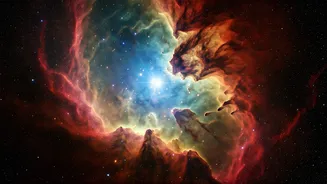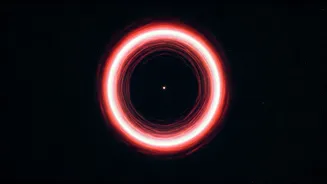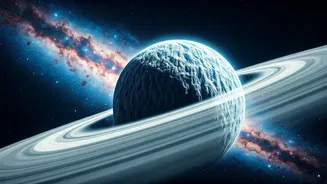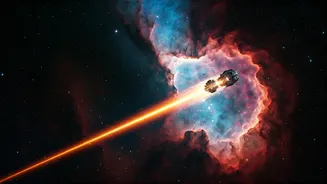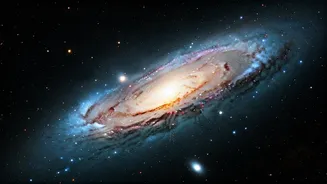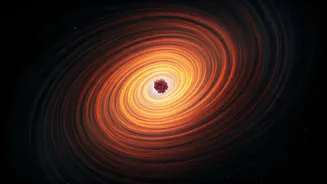Cosmic Visuals Unveiled
NASA's dedication to exploring the universe has continually gifted humanity with awe-inspiring visuals. The recent release of 12 new images marks another
milestone in this journey. These images, captured by various telescopes and spacecraft, provide a wealth of information and offer stunning aesthetic appeal. The initiative allows us to explore distant galaxies, nebulae, and planets. From the swirling beauty of galaxies to the intricate details of nebulae, each image holds a story. The images represent a fusion of scientific data and artistic expression. Each picture is a reminder of the vastness of the cosmos and our place within it.
Galactic Wonders Explored
The collection includes images that offer a detailed look at various galactic structures. Distant galaxies, billions of light-years away, reveal their intricate shapes and formations. These visuals allow astronomers and enthusiasts alike to study the evolution of galaxies and the interactions between them. For instance, images might showcase the collision of galaxies, revealing the dynamic processes that shape them. Nebulae, often referred to as stellar nurseries, are another focus. These vast clouds of gas and dust are where stars are born. The images reveal the colours and shapes of nebulae, providing insight into the stellar birth process. These visual representations are vital for research and exploration of the universe.
Planetary Perspectives
Besides galactic and nebulae images, the collection also encompasses views of planets, both within and beyond our solar system. The images of our solar system planets, like Jupiter or Saturn, often highlight atmospheric phenomena such as storms and cloud formations. Moreover, images from exoplanets, planets orbiting stars outside of our solar system, provide crucial information about the possibility of life elsewhere. These exoplanet images give details about atmospheric conditions and potential habitability. These images are captured with advanced telescopes. These images enable scientists to analyze planetary compositions, and atmospheric dynamics. This information is vital for understanding planetary formation and evolution.
Scientific Significance
Beyond their aesthetic appeal, these images hold great scientific significance. They help scientists to study the composition, temperature, and movement of celestial bodies. By analyzing the light and other radiations emitted by these objects, researchers can infer vital information about the universe. The analysis of these images helps improve existing models of the universe. This provides insights into the expansion of the universe, dark matter and dark energy, and the formation of galaxies. The data derived from these images is important for studying cosmic events and understanding the origin of the universe. These are essential for pushing the boundaries of scientific knowledge and exploring the cosmos.
Technological Advancements
The ability to capture these breathtaking images relies on state-of-the-art technology. Advanced telescopes, both ground-based and space-based, play a crucial role in collecting and processing data. These telescopes are equipped with high-resolution cameras and spectrometers that capture data. The James Webb Space Telescope (JWST) is an excellent example. It provides unprecedented views of the early universe. Sophisticated software is also used. It processes the raw data into visually stunning images. This technology helps to filter out noise, enhance details, and create the final images we see. Technological advancements are constantly pushing the boundaries of what is possible, resulting in ever-more detailed and informative images.
Public Engagement and Education
NASA's dissemination of these images serves as a crucial tool for public engagement and education. Through their release, NASA stimulates interest in space exploration and science. The images are shared through various platforms. NASA’s website, social media, and educational resources provide information about the cosmos. These resources can be used in classrooms and informal educational settings. Sharing these images inspires the next generation of scientists and explorers. They encourage curiosity and motivate individuals to learn more about the universe. The accessible nature of the images allows everyone, regardless of their background, to appreciate the beauty and wonder of space.
